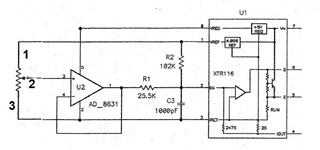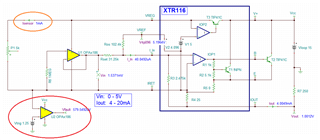Other Parts Discussed in Thread: TLV9052, OPA391, OPA187, TLV2186, OPA2187, OPA2186, OPA192, XTR105, OPA186
Are there any recommended circuit modifications we could make when using the XTR116U part that would allow the chip to go into an out of range mode if the input resistance (input current) was disconnected? Our circuit is currently configured similar to the Figure 1 representation on the data sheet. The issue we are currently seeing is that when any of the leads from the input resistance (current input) are disconnected the output hovers around the last output setting or goes to 20mA.
I appreciate the help.










